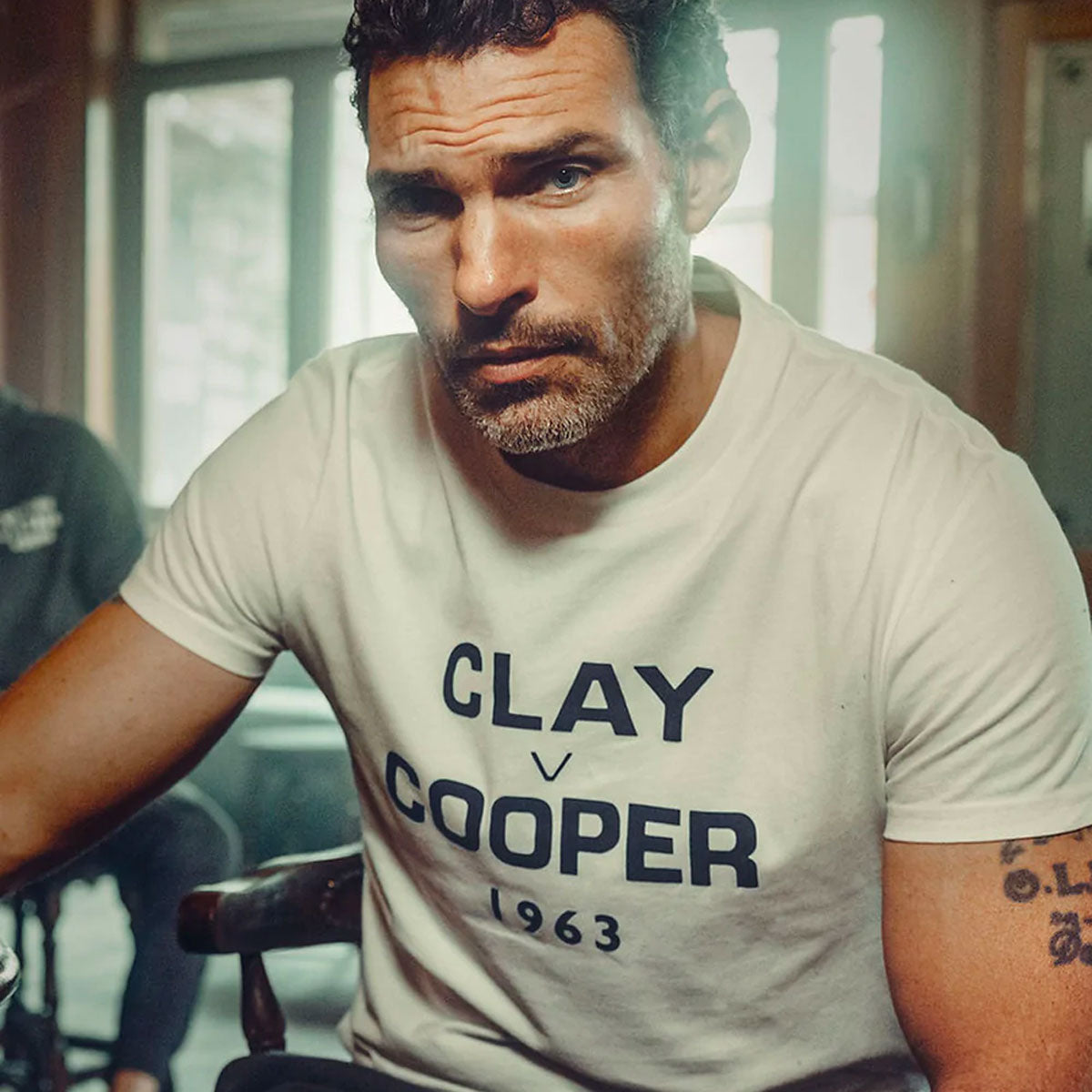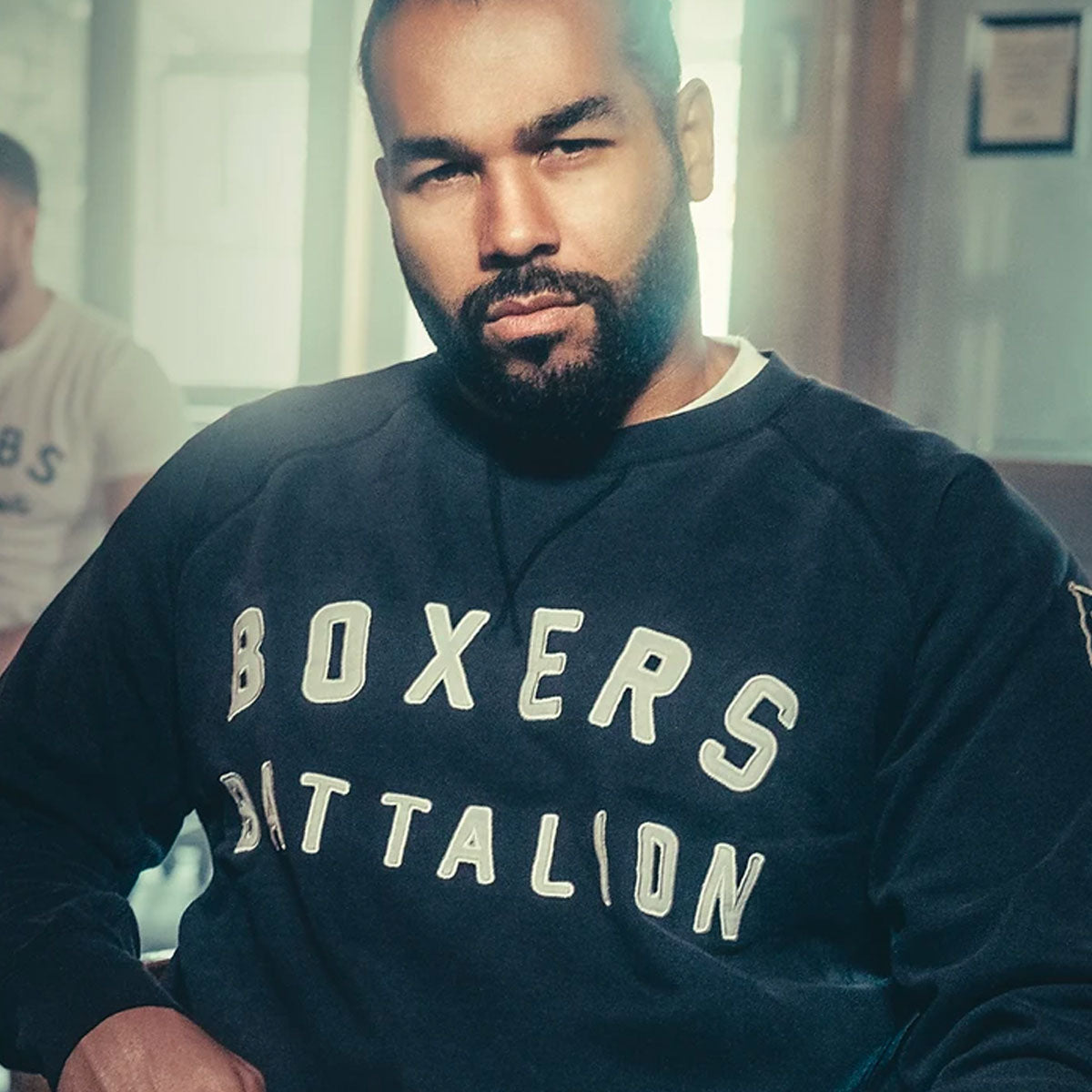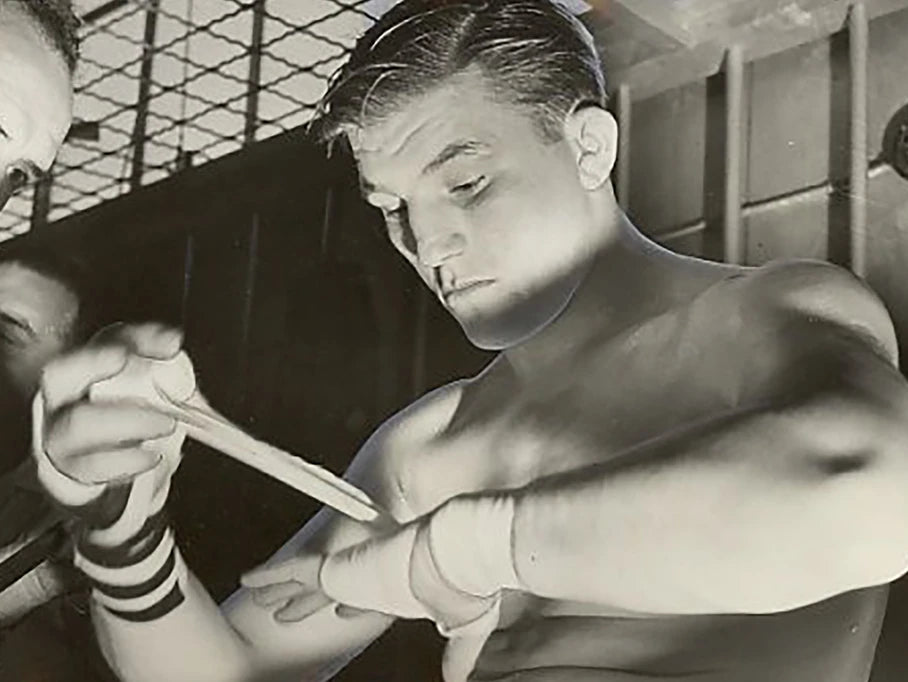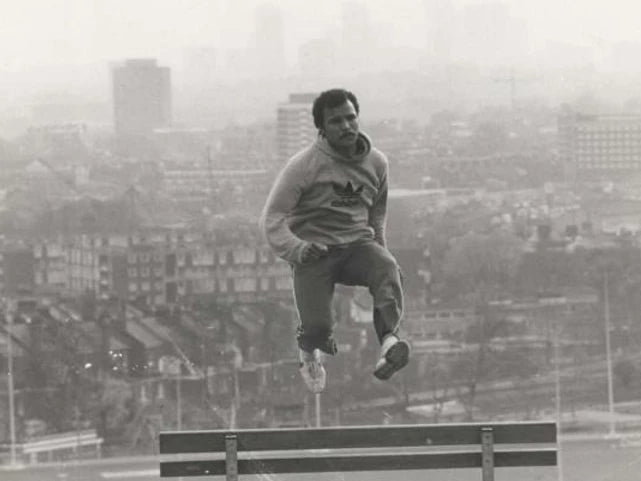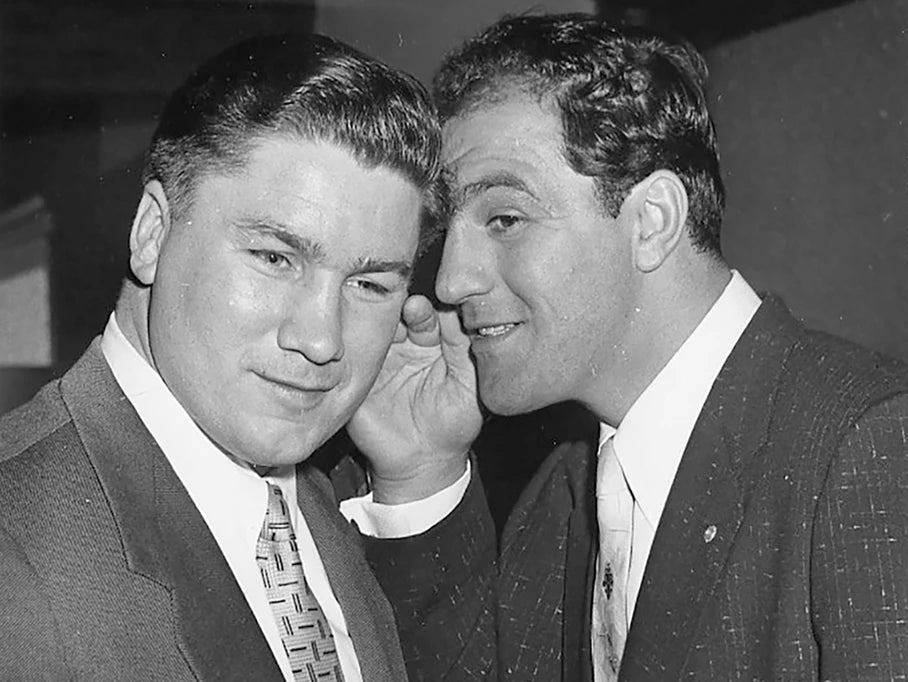Contributed by guest writer Paul Zanon.
Known for boasting some of the finest threads London could weave, Tommy Farr’s face spoke volumes behind his attire. The swollen cheek bones, the battered nose and the abundance of scars, were to an extent his vest of valour. However, the beginnings of his facial markings had started long before his boxing career did.
Born in Clydach Vale, Rhonda, South Wales, Farr was one of eight kids. His mother passed away at the age of 39 when he was a mere nine-years-old, and his father, a bare-knuckle fighter, died a few years later. By default, Farr became the main breadwinner for the family, working in the coal mines, where his father had perished.
Throughout his time as a boxer, he was often questioned, sometimes ridiculed about the blue-black engraved markings on his back, which he accumulated by crawling through ridiculously small holes and mining tunnels. Also, the scarring on his face was assumed to have come from his numerous contests in the ring, but they were the result of pieces of shrapnel hitting him from explosions detonated in the mines.

Farr soon learned to detest the vocation that took away his father’s last breath and sought his livelihood in another way. At the ripe old age of 13, on 18 December 1926, he became a professional boxer. By the age of 18 he decided to head for the lure of the big smoke, which London provided, in an attempt to accelerate his fistic opportunities. Incredibly, he’d already fought over 50 times by this stage. By the time he was 24, and with over 100 fights under his belt coming off a 22-fight unbeaten streak, Thomas George Farr relinquished his British heavyweight strap and dared to be great. A well-worn term we often hear in this present day when the underdog decides to step up and take on an elite fighter. Farr though was that guy.
The immediate world heavyweight boxing lineage was as follows: Max Baer had beaten Primo Carnera, Baer lost to Jim Braddock who then lost to Joe Louis during a politically fuelled time just before World War II. Farr did the unthinkable – he took on Louis, Braddock and Baer in successive fights over a seventh month period.

Making his maiden voyage to the US, from the moment he set off from the shores of Britain, Farr’s adoring fans huddled around a wireless or tuned in to any transmission they could find on a rare snowy black and white television set, to keep up to date with their local hero.
When asked by the media at the Louis weigh-in about his back scars, he told them he’d wrestled with tigers in a circus. Although a stretch from the truth, he certainly gained the attention of the onlookers and most certainly the respect of the ‘Brown Bomber’ in the ring.
Lasting the full 15 rounds, Farr lost a controversial points decision to the champion, but won the hearts of everyone in the crowd. Boos echoed throughout Yankee Stadium in New York, as many, including Farr himself, believed he’d done enough to at least get a draw. However, the ‘Tonypandy Terror’ did say at a later date, “My face looked like a dug-up road after he'd finished with it. I've only got to think about Joe Louis and my nose starts bleeding."
The victim of backyard decisions, Farr lost against Jim Braddock five months later on a split decision. The ‘Cinderella Man’ had been very vocal about what a terrible performance Louis had put on against the Welshman, stating that Farr was there for the taking. Braddock was duly served humble pie on recognising that his opponent was not the walkover he’d made him out to be.
Seven weeks later Farr took on Baer and lost a wide points decision. It’s worth noting that he had beaten Baer 11 months prior in Harringay, London. Despite losing to these champions, Farr’s stock rose, as did his bank balance, and he retired in 1940. Unfortunately, he made some bad investments and was forced to make a comeback to the square ring in 1950 to propel his finances out of the red. After 16 fights, during which he picked up the Welsh Area Heavyweight strap, Farr bowed out after a seventh round stoppage against British, Commonwealth and European champion, Don Cockell (who would challenge Rocky Marciano for the heavyweight world title).
He eventually went on to run a pub in Brighton and died, almost poetically, on 1 March, St David’s Day, in 1986. After 140 fights spanning 27 years, with domestic honours in two weight divisions, Tommy Farr had more than paid his penance in the boxing ring.
Paul Zanon, has had nine books published, with almost all of them reaching the No1 Bestselling spot in their respective categories on Amazon. He has co-hosted boxing shows on Talk Sport, been a pundit on London Live, Boxnation and has contributed to a number of boxing publications, including, Boxing Monthly, The Ring, Daily Sport, Boxing News, Boxing Social, amongst other publications.
Known for boasting some of the finest threads London could weave, Tommy Farr’s face spoke volumes behind his attire. The swollen cheek bones, the battered nose and the abundance of scars, were to an extent his vest of valour. However, the beginnings of his facial markings had started long before his boxing career did.
Born in Clydach Vale, Rhonda, South Wales, Farr was one of eight kids. His mother passed away at the age of 39 when he was a mere nine-years-old, and his father, a bare-knuckle fighter, died a few years later. By default, Farr became the main breadwinner for the family, working in the coal mines, where his father had perished.
Throughout his time as a boxer, he was often questioned, sometimes ridiculed about the blue-black engraved markings on his back, which he accumulated by crawling through ridiculously small holes and mining tunnels. Also, the scarring on his face was assumed to have come from his numerous contests in the ring, but they were the result of pieces of shrapnel hitting him from explosions detonated in the mines.

Farr soon learned to detest the vocation that took away his father’s last breath and sought his livelihood in another way. At the ripe old age of 13, on 18 December 1926, he became a professional boxer. By the age of 18 he decided to head for the lure of the big smoke, which London provided, in an attempt to accelerate his fistic opportunities. Incredibly, he’d already fought over 50 times by this stage. By the time he was 24, and with over 100 fights under his belt coming off a 22-fight unbeaten streak, Thomas George Farr relinquished his British heavyweight strap and dared to be great. A well-worn term we often hear in this present day when the underdog decides to step up and take on an elite fighter. Farr though was that guy.
The immediate world heavyweight boxing lineage was as follows: Max Baer had beaten Primo Carnera, Baer lost to Jim Braddock who then lost to Joe Louis during a politically fuelled time just before World War II. Farr did the unthinkable – he took on Louis, Braddock and Baer in successive fights over a seventh month period.

Making his maiden voyage to the US, from the moment he set off from the shores of Britain, Farr’s adoring fans huddled around a wireless or tuned in to any transmission they could find on a rare snowy black and white television set, to keep up to date with their local hero.
When asked by the media at the Louis weigh-in about his back scars, he told them he’d wrestled with tigers in a circus. Although a stretch from the truth, he certainly gained the attention of the onlookers and most certainly the respect of the ‘Brown Bomber’ in the ring.
Lasting the full 15 rounds, Farr lost a controversial points decision to the champion, but won the hearts of everyone in the crowd. Boos echoed throughout Yankee Stadium in New York, as many, including Farr himself, believed he’d done enough to at least get a draw. However, the ‘Tonypandy Terror’ did say at a later date, “My face looked like a dug-up road after he'd finished with it. I've only got to think about Joe Louis and my nose starts bleeding."
The victim of backyard decisions, Farr lost against Jim Braddock five months later on a split decision. The ‘Cinderella Man’ had been very vocal about what a terrible performance Louis had put on against the Welshman, stating that Farr was there for the taking. Braddock was duly served humble pie on recognising that his opponent was not the walkover he’d made him out to be.
Seven weeks later Farr took on Baer and lost a wide points decision. It’s worth noting that he had beaten Baer 11 months prior in Harringay, London. Despite losing to these champions, Farr’s stock rose, as did his bank balance, and he retired in 1940. Unfortunately, he made some bad investments and was forced to make a comeback to the square ring in 1950 to propel his finances out of the red. After 16 fights, during which he picked up the Welsh Area Heavyweight strap, Farr bowed out after a seventh round stoppage against British, Commonwealth and European champion, Don Cockell (who would challenge Rocky Marciano for the heavyweight world title).
He eventually went on to run a pub in Brighton and died, almost poetically, on 1 March, St David’s Day, in 1986. After 140 fights spanning 27 years, with domestic honours in two weight divisions, Tommy Farr had more than paid his penance in the boxing ring.
Paul Zanon, has had nine books published, with almost all of them reaching the No1 Bestselling spot in their respective categories on Amazon. He has co-hosted boxing shows on Talk Sport, been a pundit on London Live, Boxnation and has contributed to a number of boxing publications, including, Boxing Monthly, The Ring, Daily Sport, Boxing News, Boxing Social, amongst other publications.

